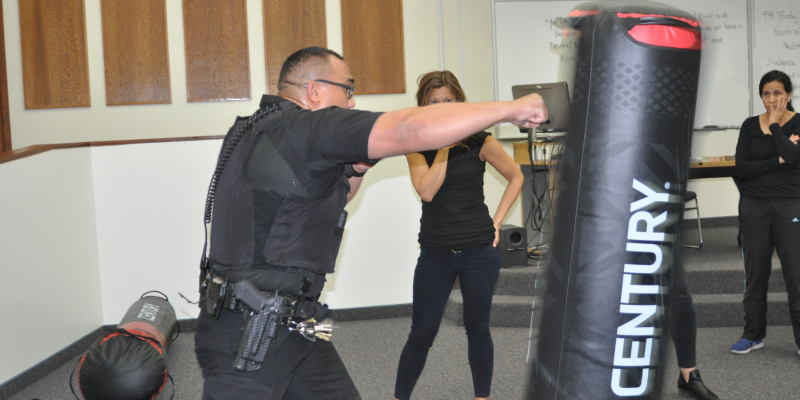While others spent their Valentine’s Day with their loved one, some women from the Dixie State University community spent their afternoon learning to throw punches, use their voice and to stand in protective stances.
Ola Kaonohi, a security officer and one of the only officers who has Rape Aggression Defense training at DSU, helped over 30 women in attendance at the Self-Protection for Women event learn techniques to protect themselves if physically attacked or sexually assaulted.
According to Rape, Abuse and Incest National Network, in the U.S. one out of every six women have been survivors of an attempted or completed rape, and 55 percent of sexual assaults happen at or near the survivor’s home.
“There’s no sure way to prevent rape,” Kaonohi said.
The most important things for women to do, he said, is be aware of their surroundings and use their voice. He said screaming can be perceived as playful, so if a woman is attacked, it’s important for her to be assertive and yell.
“Attackers are cowards…because they don’t like attention,” Kaonohi said. “They want an easy target. They’re looking for someone who is not paying attention to their surroundings.”
Celeste Gonzalez, a freshman criminal justice major from Fontana, California, chose to attend because she’s already experienced stalking and rape in her life.
“[They’re] things that I wanted to have on my belt to help protect myself in the future,” Gonzalez said. “[Self-protection] is really important. I think it’s an extra step to keep ourselves safe, just in case.”
Kaonohi taught women how to stand in a protective stance called cautious contact, which is where you stand with your hands by your chest and in front of you. He also taught how to throw a punch, kick or knee while in this stance.
“You can be surprised how hard you can strike someone when you just practice,” he said.
He also demonstrated what to do in a situation if someone grabs you from behind and puts you in a choke hold. He said people in a choke hold have six to eight seconds before they pass out, so the most important thing to do first is protect your airway. You can do this by tucking your chin in to give a little space between you and the attacker’s arm and then putting your hands around his arm. At this point, Kaonohi said to do what you can to get out of the attacker’s grasp, like head butting, kicking or trying to twist out, or using something on you to hit the attacker like car keys or a bag.
Deborah Decker, president of Utah Women in Higher Education Network and assistant director of advisement at DSU, said learning self-protection isn’t just a one time thing; women need refreshers.
“It’s like CPR training,” Decker said. “Everyone should be CPR trained. Everyone should know self-defense.”




